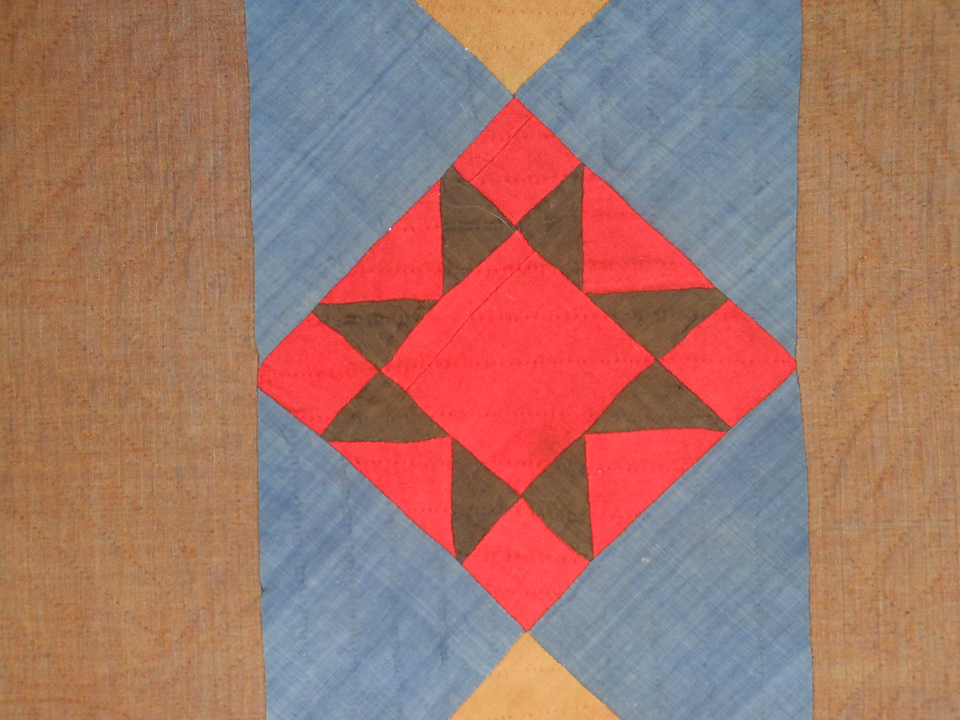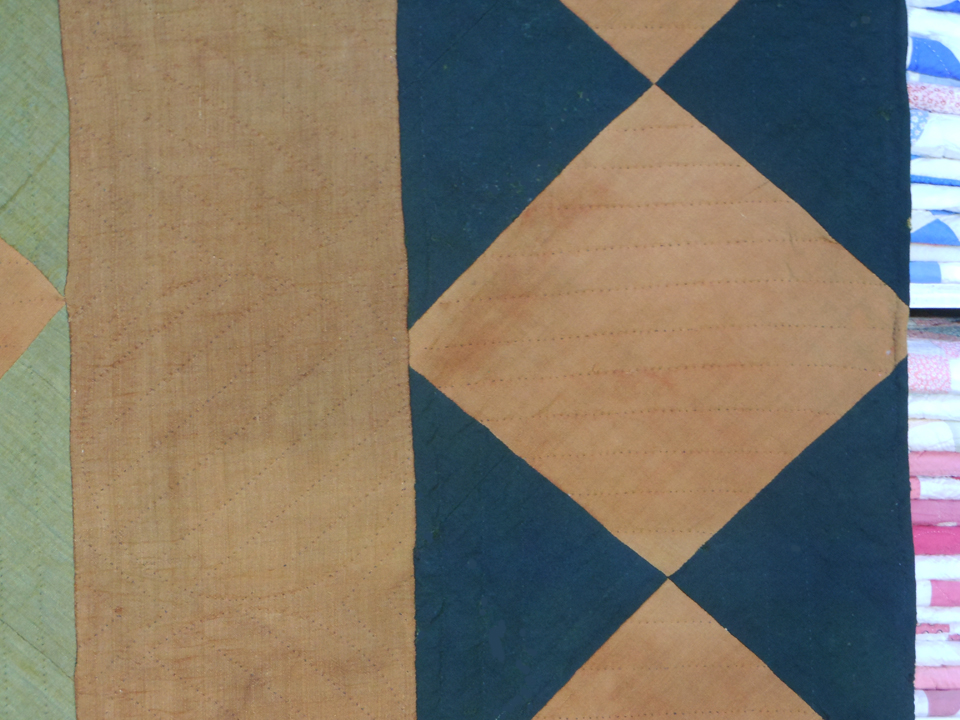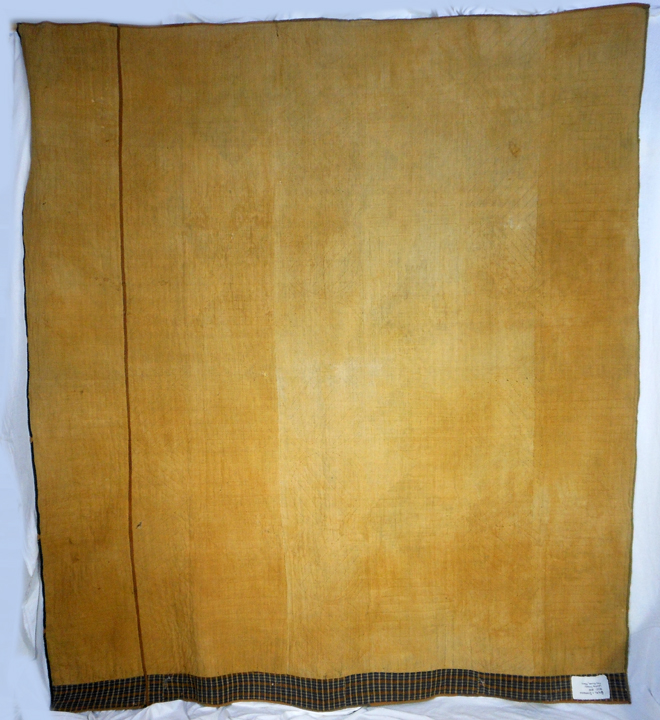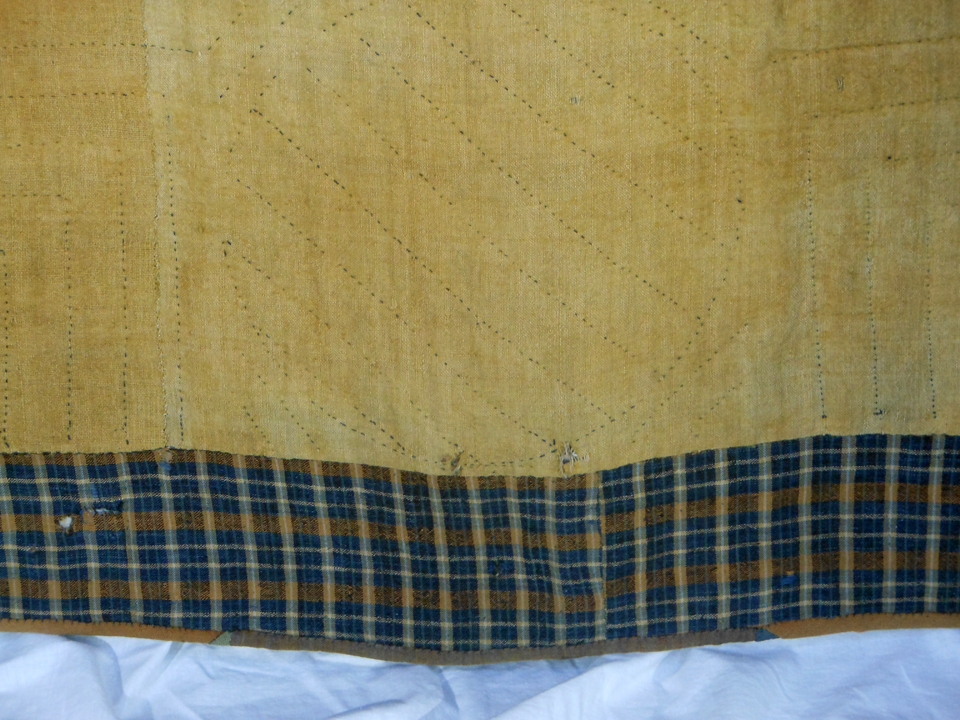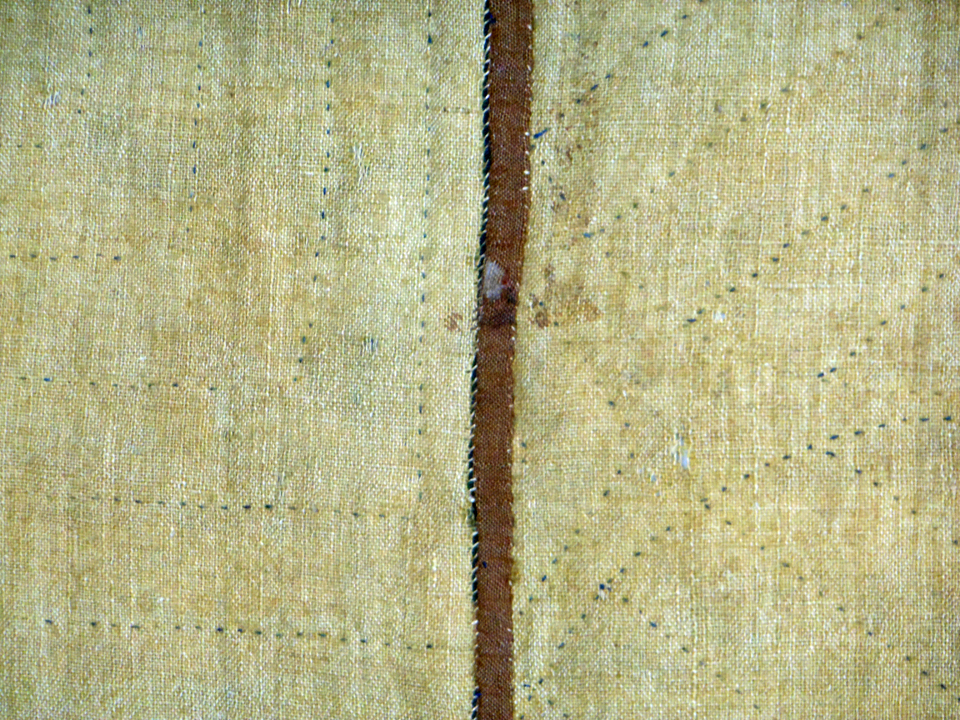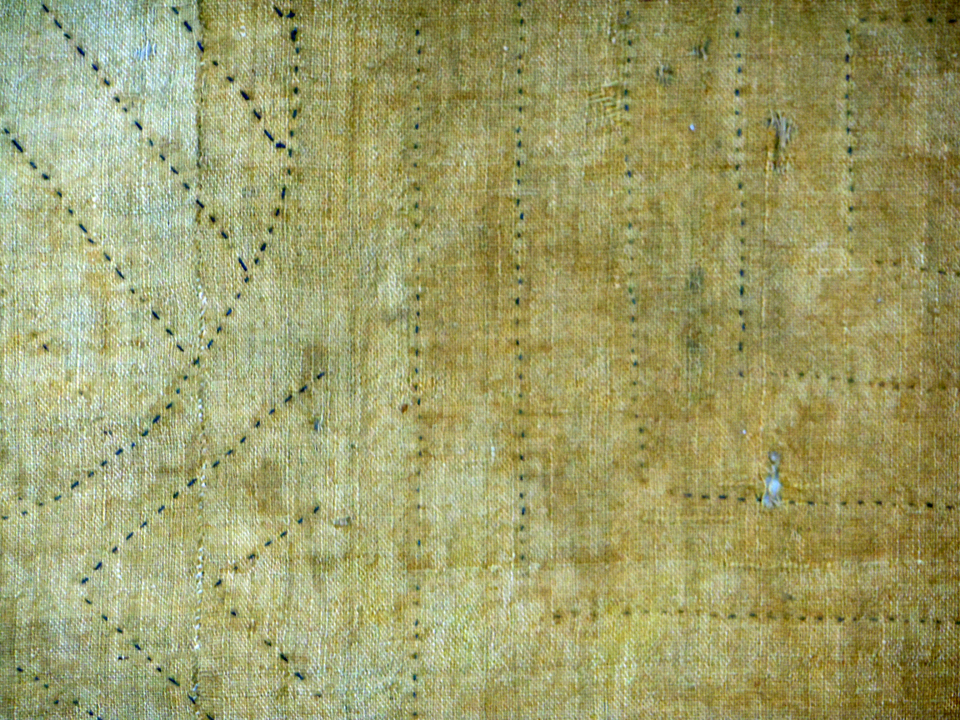
How to contact Betsey Telford-Goodwin's Rocky Mountain Quilts:
Telephone - for orders or questions - 1-207-363-6800
FedEx - 130 York Street York, Maine 03909
Email - betsey@rmquilts.com
CONJE4 Linsey Bars and Diamonds
18th century fabrics
88 x 94 inches
Fall River, MA - Quaker Family
$6,500
The quilt came from an 1820 house, but the quilt pre-dates the house. This quilt talks to me. Have you ever seen a quilt that is comprised of numerous other quilts sewn together in order to make a very graphic quilt to keep you warm? The fabric used in this quilt is early New England homespun. I feel that most of this fabric is from the 18th century. Before the Revolutionary War England would not allow us to raise Moreno sheep, which produce soft wool. We could only have sheep for mutton, which produce coarse wool. The majority of the homespun on this quilt is made from such sheep that produced coarse wool. Back in the 18th century and early 19th century in New England we were concerned with staying warm. Such fabrics would achieve this purpose.
One of the strips has blue woolen fabric that appears to be of a finer quality. I am not sure if this was purchased from England or if it was spun by the family. We also took a picture of the back to show you where strips of another quilt were added to make this larger. Creating such fabric often took as much as 2 years from start to finish. This fabric would have been loomed at home, usually on the third floor of old New England colonials. After the fabric was woven the last process before creating a textile was to dye the fabric different colors. All the colors were from vegetable dyes. There were approximately seven different vegetable dye colors available to New Englanders.
This quilt was made in Fall River, MA by a Quaker family. The name is available on the sale of the quilt. The house it came from was built in 1820. I wonder if their previous home burned, which was not unusual in those days, and they salvaged what they could from the quilts that survived, putting them together to create a fabulous early textile. History absolutely jumps out of this quilt. The red and black star, the only pieced part of the quilt, would have been the newest addition. This also goes along with the fact that it is in the row with blue fabric that is from a newer wool fabric. The diamonds on point in this row are also from early homespun linsey. This is a quilt I could study and study and never get tired of looking at it. The fabric used in this quilt is wool and/or a combination of wool and linen, sewn and quilted with linen thread. You will find moth holes on the early piece, and my advice to anyone thinking of buying an early wool quilt is that if it has no moth holes, then it is probably not an early piece.
Looking at the back, one piece 37" wide, two strips to the left, one 22" the other 14" On the left side of the 22" piece they actually left the outside binding on. The right hand side, a 15" piece has been attached. The batting is wool, which you can see through some wear in the quilt. The plaid piece on the bottom was added after this quilt had been put together and re-quilted. This is truly an amazing piece of history. The family name is available on sale.applied binding is 1/4 inch. <\p>
We are not surprised that this is hand sewn since it was created 20 years before the sewing machine. The backing, binding and border surrounding the edge are Prussian blue. In the late 20th century, one would call it cobalt blue. Quilting was a woman’s mark of excellence and this piece surpasses all expectations. The quilt has applied sleeves sewn on by Rocky Mountain Quilts and is ready to hang. Call Betsey for more details.
